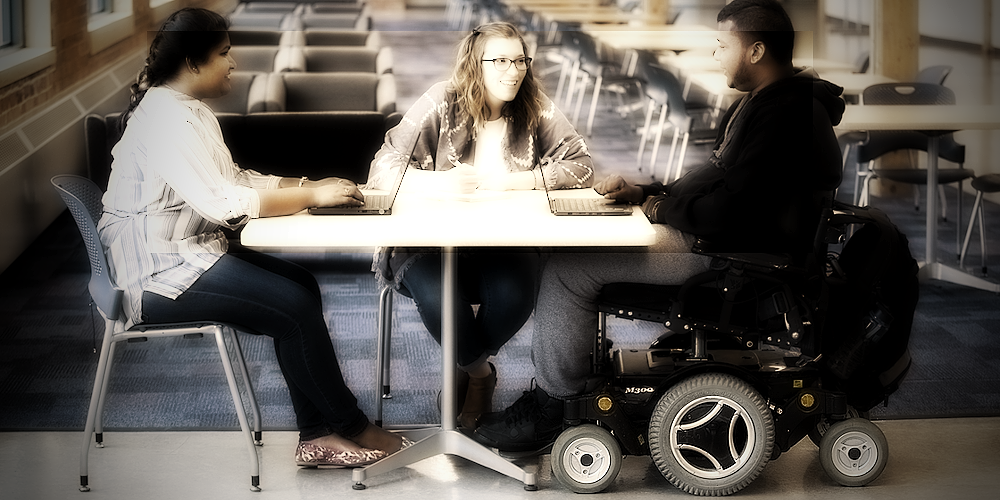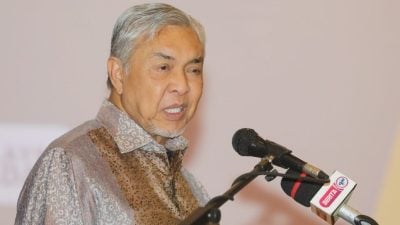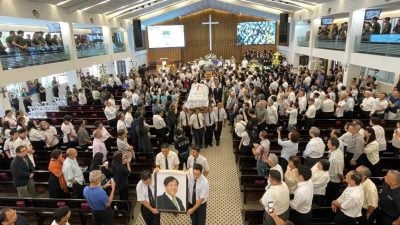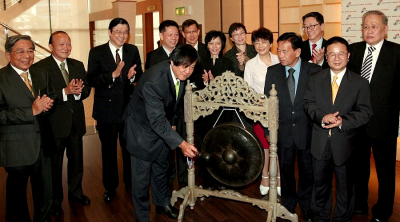
We read with interest that Higher Education Minister Datuk Seri Dr. Zambry Abdul Kadir has recently chaired an “Advisory Committee Meeting” of experts on drafting the Malaysia Higher Education Plan 2026-2035. It is expected to be completed by the end of the year to replace the current blueprint.
We look with promise to this new plan because the Malaysia Education Development Plan 2015-2025 entitled the ‘Malaysia Education Blueprint 2015–2025 (Higher Education)’ is thus far a total failure for persons with disabilities.
The 2015–2025 Blueprint for Higher Education is a 240-page document that only twice mentions persons with disabilities: once in the context of “providing equitable access to educational opportunities”, and to offer “wider access” and “improved infrastructure” for life-long learning.
There is no mention of “inclusion”, “reasonable accommodation”, or creating barrier-free environments.
The executive summary (40 pages), which is widely disseminated, has no mention of disability, this despite extensive local and international consultation — 10,500 people engaged over two years with foreign organisations and experts.
It is as though 16% of the Malaysian population, those with disabilities, are non-existent to our higher education ministry.
This is surprising as the 2015–2025 Blueprint for Higher Education outlines five lofty aspirations which include access, quality, equity, unity and efficiency — all principles and aspirations close to our hearts as persons with disabilities, care partners and civil society organisations involved in disability work/advocacy.
We fortunately have a “Garis Panduan Pelaksanaan Dasar Inklusif Orang Kurang Upaya di Institusi Pendidikan Tinggi” launched in 2019 by then education minister Prof Dr. Maszlee Malik, to push for Institut Pengajian Tinggi (Institutes of Higher Education) to become inclusive and remove barriers.
We would like to remind universities that just because you have students with disabilities on campus does not mean your university is inclusive.
Much still remains to be done to make our public and private universities inclusive, genuinely barrier-free, learning-conducive and workplace-friendly for persons with diverse disabilities.
It might interest the higher education minister to know that data from the ministry of higher education shows that only 792 persons with disabilities were enrolled in public universities in 2022. This is a mere 0.55% of the total 144,579 students enrolled for that year.
For community colleges, it was 0.52% (34 out of 6,533 students), and for polytechnics, a dismal 0.20% (66 out of 31,967 students).
It would be good to be reminded that we have been signatories to the 2006 United Nations Convention on the Rights of Persons with Disabilities (CRPD) since 2008.
Our Persons with Disabilities Act 2008 (PwD Act 2008, Section 28) clearly states that “Persons with disabilities shall not be excluded from the general education system on the basis of disabilities, and children with disabilities shall not be excluded from pre-school, primary, secondary and higher education, on equal basis with persons or children without disabilities…
“The Government and private educational providers shall, in order to enable persons and children with disabilities to pursue education, provide reasonable accommodation…., among others, infrastructure, equipment and teaching materials, teaching methods, curricula and other forms of support that meet the diverse needs of persons or children with disabilities.”
Ensure inclusive and equitable quality education, and the promotion of life-long learning opportunities for all are also part of the United Nations Sustainable Development Goals (SDG 4) which Malaysia is committed to implementing by 2030.
Despite committing to an international convention (CRPD) and development agenda (SDGs), as well as having enacted national legislation (PwD Act, 2008), we continue to have a dismal record on inclusive education for persons with disabilities.
Note that the policy paper on “Early Intervention and Quality Education of Children with Disabilities in Asia and the Pacific”, jointly prepared by the United Nations Economic and Social Commission for Asia and the Pacific (ESCAP), United Nations Educational, Scientific and Cultural Organisation (UNESCO), and United Nations Children’s Fund (UNICEF), rated Malaysia as not promoting inclusive education.
Hence, we appeal to Datuk Seri Dr. Zambry to kindly enflesh the words of the PwD Act 2008 and CRPD in the Malaysia Higher Education Plan 2026-2035. Make it a written policy and then work to translate that into reality, in our lifetime if possible.
Hence, we appeal to Datuk Seri Dr. Zambry: Please give life to implementing Malaysia’s commitments to the PwD Act, 2008, the CRPD and the SDGs, in the Malaysia Higher Education Plan 2026-2035. Make it a landmark higher education strategy; then translate that into reality.
With this, Malaysians could hope for real progress to proudly report on by 2030 (SDGs) and 2032 (4th Asian and Pacific Decade of Persons with Disabilities, 2023-2032).
Perhaps Datuk Seri Dr Zambry could reflect on these concerns/issues:
1. How many of the current experts he has engaged (the “Advisory Committee”) in drafting the Malaysia Higher Education Plan 2026-2035 are persons with disabilities? Do they comprise 16% of the group in line with the population ratio of persons with disabilities?
2. What is the plan of the Ministry of Higher Education to proactively engage persons with diverse disabilities, care partners and civil society organisations knowledgeable about reasonable accommodation and other aspects of disability inclusion in education?
Their meaningful participation and contributions are critical for the drafting of an inclusive Blueprint 2026-2035.
3. We hope the Ministry of Higher Education understands the difference between “inclusive education” and “mainstreaming” for adults with disabilities.
It is obvious that the Ministry of Education does not appreciate this, when it comes to inclusive education for children with disabilities.
4. What approaches and initiatives will there be in the Malaysia Higher Education Plan 2026-2035 to have a higher proportion of persons with disabilities in the teaching faculty, management and in decision-making positions?
We impress on the minister that international data and research clearly show that promoting inclusion encourages educators to design and teach courses keeping in mind that all students are unique, i.e. to practise Universal Design for Learning with diverse learning and varied assessment approaches.
This increases the engagement, participation and performance of ALL students.
In addition, Universal Design Physical Structure for all institutes of higher education will enhance accessibility and create barrier-free environments for learners, teaching staff and other employees.
What we do to improve the inclusion of persons with disabilities will benefit society at large.
We look forward to being involved in supporting the development of a meaningful Malaysia Higher Education Plan 2026-2035, one that is inclusive of all Malaysians.
Click here for the list of signatories.

ADVERTISEMENT
ADVERTISEMENT








































